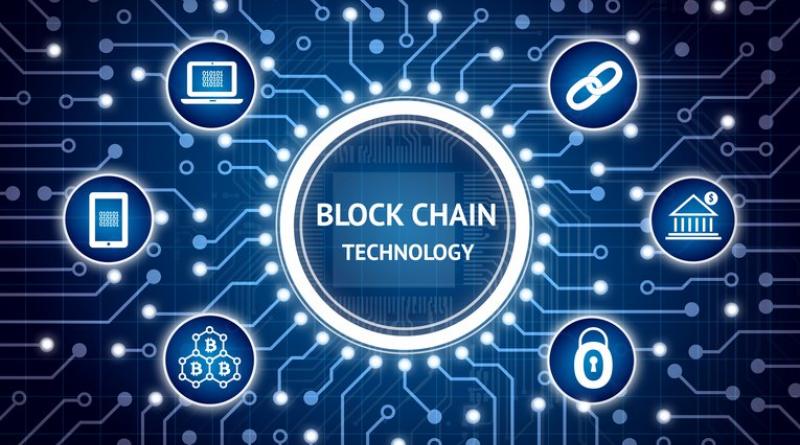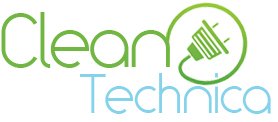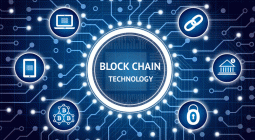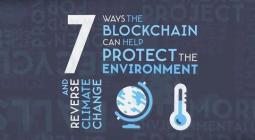How Blockchain Can Prepare The Aging US Power Grid For Clean Energy Technologies.

Since the late 1800s, power grids have been connecting electricity providers to citizens in cities all over the US. For several decades, these grids were rightly considered an engineering feat of the modern world. They were designed to allow electricity to flow from massive power plants through a network, allowing people to instantly turn on home appliances. And while these networks are still being used, they are in dire need of updating to meet the needs that come with an increased demand for renewable energy.
The challenges to migrate the US electrical grid to green energy are massive. For example, the current and dated grid is designed to deliver electricity in one direction: from the energy plant to a person’s home. Rather than store electricity, the plants generate and send it through transmission and distribution lines.
Green energy, on the other hand, requires storage systems in order to work properly in a distribution network. Unlike the energy that is continuously generated in power plants, energy from wind and solar comes and goes; it does not flow continuously. As such, the aging grid in the US would need to be redesigned to avoid being overwhelmed by the amount of energy that needs to be stored.
So, the use of green energy will require a system update. The old US grid has grown to be inefficient and is increasingly failing. In fact, some experts say that it was never designed to be efficient. Thankfully, blockchain has the ability to become a bridge for the renewable energy shift, by facilitating current peer-to-peer energy sharing solutions and accommodating the influx of electric vehicles.
More stakeholders will enter the power grid in the near future
According to the US Solar Market Insight, the third quarter of 2018 saw 1.7 gigawatts (GW) of solar photovoltaics (PV) installed in the US, bringing the total installed capacity to 60 GW, or enough to power 11.3 million houses. What’s more, the number of GW of solar PV is estimated to double during the next 4 years. Where there is energy, there will be stakeholders. But in this case, it’s blockchain ability to use, track, manage, and set preferences for energy exchanges within the grid that is especially attractive.
Power grids have been rapidly moving towards a more decentralized architecture by using distributed energy sources. This opens doors for more stakeholders within electricity markets. These stakeholders include independent power producers, energy prosumers, microgrid operators, and aggregators of distributed energy resources in the form of virtual power plants.
Through blockchain, stakeholders can conduct energy transactions and be sure of the privacy and security of the transactions, thanks to the fact that peers can conduct transactions without any middlemen. Plus, the use of smart contracts on blockchain provides automation and enforcement of the contraction once the terms of service have been completed.
As an example, a microgrid could issue a smart contract specifying that it will purchase energy from any merchant within the marketplace that is only 100% renewable, and for a certain price. Once the authenticity of the renewable energy has been verified and the microgrid ensures it has enough funds for the transaction, the smart contract automatically gets processed. In Brooklyn, we are already seeing an example of an energy trading platform that uses blockchain. This way, residents of the neighborhood can bypass electric companies and trade among themselves.
Blockchain’s role in the instability of power grids caused by solar and wind energy
Because of the variability of energy from the sun and wind, it’s much harder for utilities to match supply and demand the way they can with standard power plants. While power plants generate energy continuously and send it on the grid when a person needs it, the sun and wind are not always available. They are complex decentralized energy sources that centralized management systems cannot handle.
Cases in the US and abroad have shown how centralized systems are overwhelmed by these energy sources. In California, for example, solar farms have previously had to shut down on sunny days because the grid in the state was unable to handle the amount of solar energy being generated. In Germany, 2012 saw industrial companies sustaining damages due to theinstability of the grid and unprecedented solar and wind fluctuations. And in Australia, there were major statewide blackouts in 2016 for the same reasons.
Grid congestions occur when there is too much demand in a highly concentrated area, usually during peak electrical consumption hours. For electric utilities, grid consumption places a strain on the already aging infrastructure and further reduces its lifespan. What’s more, it can overload the system and cause rolling blackouts.
To mitigate grid congestion, utilities often turn to costly “peaking” power plants to meet the peak demand. And, if a particular area consistently exceeds the peak demand that can be reliably served by power distribution equipment in the area, the utility will plan to develop a new and expensive substation closer to the area where the demand is coming from. The new substation will upgrade the distribution equipment and thereby supply reliable power to the area.
Blockchain can facilitate solutions to fight against grid burnouts. One example is load balancing within microgrids. The peer-to-peer energy transaction capabilities of blockchain allow for a balance of renewable power intermittency. It also helps create net zero-energy communities— neighborhoods that reduce energy consumption needs by balancing various sources like thermal, vehicles, and electrical. By allowing residential end customers to mitigate excess energy loading off the grid, they can reduce the load or provide the supply.
Finally, Power Restoration Management is another way that blockchain can impact existing solutions. Blockchain allows residential customers to utilize their Distributed Energy Resources (DERs), such as wind or solar, to help stabilize the grid and restore power to the grid in cases of failure. While blockchain may not do this more efficiently than the other existing methods, it ensures that the process of setting the price of selling such services back to the grid is fair and equitable. It automates the process of settlements and relieves the electric utilities of the administrative burden of generating invoices and disbursing fees.
Helping to accommodate the increase in Electric Vehicle (EV) use
EVs are crucial in the fight against climate change. The more EVs on the road, the less greenhouse gas emissions there are. And, if the EVs are charged with renewable energy, they provide even more savings. People are taking notice of the advantages of EVs, and as it stands, the number of EVs on roads are estimated to rise from 3 million to 125 million by 2030. While this is good news for the planet, it’s a challenging figure for electrical grids.
Even nowadays, EVs have had negative effects on power distribution equipment when several of them charged at the same time during peak hours. This phenomenon is known as coincidental charging. As an example, in 2017 the Sacramento Municipal Utility District noted that 17% of its transformers had to be replaced because of coincidental charging of EVs. At US $7400 per unit, the numbers quickly add up. What’s more, it is estimated that all of the existing 50 kVA distribution transformers would have to be upgraded if each home were topurchase one EV each.
Blockchain can become a platform that connects electric utilities with large electric vehicle aggregators such as commercial parking garages and airports, and thus, to the EV owner. Incentive signals can be issued over blockchain to slow down the rate of charging for EVs when grid congestion occurs or to increase the rate of charging when solar energy is abundant and the price of electricity is comparatively lower. In the near future, EVs operating in the vehicle to grid (V2G) mode will be able to discharge their power into the grid, or provide additional voltage and frequency support, thereby selling ancillary services back to the grid.
People are opening their eyes to the benefits of renewable energy. With cities all over the US moving to green technologies, the energy grid is in dire need of an upgrade to accommodate this trend. While solutions to its lack of efficiency have been in the works for some time, blockchain could better prepare the grid for renewable energy. With this technology, the obstacles arising from the shift to green no longer appear insurmountable.
26 March 2019





